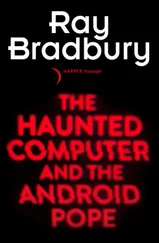Mary Carol is fond of saying, “You have to be where you’re at before you can get anywhere.” Nowadays, with the rise of a whole category of adult self-help and psychologically oriented software, the program titles and personal philosophy of Avant Garde Creations might not sound too odd for a software publisher. But back in 1980 when spreadsheets and word processors were still pretty exotic stuff to most people, it was definitely unusual to hear about software that was supposed to have some effect on your state of mind.
Frankly, we wondered where they found enough buyers to keep their company afloat. We knew that thousands of people were playing games and keeping track of their accounts receivable on their Apples, but it seemed unlikely that very many folks were undergoing self-analysis via floppy disk. Nevertheless, Avant Garde Creations has managed well. Although it is hardly a Microsoft or an Apple, it is the very stereotype of the neo-utopian fringe software company that cropped up in the boomtimes of the early 1980s. It is one of the few of those conceptual wildcatting ventures that survived the 1983-84 shakeout. And Don and Mary Carol are two of the very rarest of the old utopian fringe who managed to prosper as well as survive.
After we first met Mary Carol and Don, Gary and I saw them frequently for at least a year, during which time we would have regular “show and tell” sessions about our products. We liked one another, but despite the fact that we eventually became their friends and were their only colleagues within several hundred miles, Don and Mary Carol refused to tell us where they lived. All we knew was that they were located “outside Eugene,” which could have meant a suburban house, a small farm, a trailer park, or a deep-forest cabin.
Still, even if they didn’t want to show us their location, they certainly had no qualms about showing us their software, and they were always eager to share their ideas. They told us they were running a kind of human potential workshop, which to my limited experience sounded quite a bit like est or Lifespring or the other personal growth workshops that were popular in the 1970s. They also told us that they had been book publishers before they got into software and had produced books that, like many of their programs, were about their vision of social and personal transformation. These even included some children’s books that were a bit bizarre for our tastes. I remember one of them, entitled The Magic Carpet and the Brick Wall ,—in which the young protagonist of the story is violently beaten by his father—that struck me as utterly blood-curdling and probably quite terrifying to young children.
They knew we thought they were a little weird, and we suspected that they thought we were more than a little square. And all things considered, we probably found them a lot more interesting than they found us. Mary Carol is a dynamic and very savvy businessperson, and I wouldn’t have been surprised if I had met her in a position of responsibility at Apple, Microsoft, or IBM instead of at a small, slightly strange software shop somewhere outside Eugene. Don Jones—or as he was calling himself some time later, Don Fudge—has an engaging, earnest manner, a head full of ideas, and a somewhat mysterious past. We knew that he was from Indiana, went to school in Pennsylvania, was a Vietnam veteran, and refused to allow himself to be photographed— and that both he and Mary Carol had lived in a totally self-sufficient commune in the backwoods of northern California in the late 1960s.
From the start, they were very helpful to us, even though we didn't profess even to understand, much less agree with, whatever point their more esoteric software was attempting to make. They were capable of producing more mainstream software, however. They even gave us copies of their programs that had nothing to do with transformation and everything to do with bringing in some income—a mailing list program, some nice utilities for doing graphics routines—little pieces of programs that could come in handy when you are designing a computer game.
While Brøderbund was just getting on its legs, Avant Garde was building a network of people for itself. Some of those people were from the same unusual social-ideological scene, and some of them were programmers. Don and Mary Carol established their own corner of the software subculture, and somehow all those retailers, wholesalers, programmers, and salespeople that Don and Mary Carol cultivated in the early years have helped carry them through times that have
Seen many other companies go under or merge with larger outfits.
When we first met them during those early years, Don had a very intriguing ideological bias regarding software marketing, especially considering that Avant Garde Creations was a struggling start-up company. In 1980, he firmly believed that no commercial software package should cost more than $9.95. Like a lot of the true believers in the early 1980s, Don was convinced that our market would grow from 100,000 enthusiasts to 100 million product-hungry consumers in a matter of a few years.
Another one of Don’s ideas—and we always teased him about this—was his predilection for conspiracy theories. I have noticed that there is a significant minority of the general population who think like Don in some ways—people who are very susceptible to theories that the whole world is secretly manipulated by other people whom none of us know or understand. He thought that the 55-miles-per-hour speed limit was a conspiracy, for example, but I never did discover who was conspiring against whom.
In one interesting episode involving Don and Bill Budge, Don called Bill to find out how his 3-D graphics package worked. “It’s a conspiracy,” Don fumed when he told me that Budge wouldn’t divulge his trade secrets. “Bill Budge won’t tell the secret because he’s trying to lock it all up. His 3-D graphics package is copy-protected.” This was a pretty typical hacker’s reaction. Programmers, in the days before programming became such a valuable proprietary exercise, were used to sharing information freely with one another. Don was outraged that the graphics utility was copy-protected; this, he felt, kept useful knowledge about the tool from other programmers.
In fact, Bill had nothing to do with the copy-protection scheme. It was his publisher’s idea, but by the time Don found out about this (if ever) he was firmly entrenched in his conspiracy hypothesis. Don cooked up a pretty silly-sounding scheme whereby he would figure out what Bill was allegedly trying to prevent him from knowing. Then he was going to write a program called “Hi-Res Secrets,” put a picture of a sexy woman on the cover, rename himself Don Fudge, and make the subtitle: “If you can’t Budge it, Fudge It.” The funniest part of the story is that he actually came up with the product, actually put the sexy picture on the cover, and even adopted Fudge as his last name. He got a lot of flack, though, so he took the woman off the cover. The program ended up selling a respectable number of copies—certainly a lot more than the Creative Life Transformation stuff.
Brøderbund left Eugene in August 1981. Avant Garde Creations, however, stayed “somewhere outside Eugene” until its customer base expanded and it began to see some money coming in. At that time, Mary Carol and Don had to face the same growing pains that were confronting all of us. They finally moved into Eugene. They expanded to a staff of four. By 1983, the staff had grown to twenty-four, but the corporate headquarters—although it was in Eugene rather than in the woods somewhere and had a real address as well as a post office box—was still characteristically unorthodox: Their last Eugene headquarters was in a typically professional, handsome wood-paneled office building—with a fairly large river flowing where the foundation should have been. To get from the parking lot to the glass-fronted lobby of the main building, people had to cross a bridge at the third-story level.
Читать дальше










